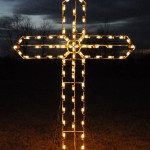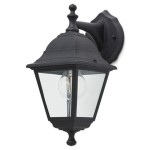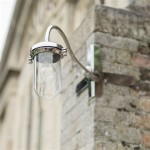Low Voltage Outdoor Lighting: LED vs. Halogen
Outdoor lighting plays a crucial role in enhancing the aesthetics and functionality of any property. From illuminating pathways to accentuating landscaping, the right lighting can transform a space into a welcoming and secure environment. In the realm of low voltage outdoor lighting, two primary options dominate the market: LED and halogen. Each technology offers distinct advantages and disadvantages, making it essential to understand their key differences before making a choice.
Energy Efficiency and Cost Savings
One of the most significant advantages of LED lighting is its exceptional energy efficiency. LEDs consume significantly less power than halogen bulbs, resulting in substantial energy savings. This translates to lower electricity bills and a reduced environmental footprint. While halogen bulbs may have a lower initial purchase price, their higher energy consumption over time can outweigh this initial cost saving. LEDs also boast a longer lifespan, typically lasting up to 50,000 hours, compared to 2,000 hours for halogen bulbs. This extended lifetime eliminates the need for frequent bulb replacements, further contributing to savings.
Brightness, Color Temperature, and Light Quality
LEDs offer a wide range of brightness levels and color temperatures, allowing for precise control over the ambiance created. While halogen bulbs emit a warm, yellowish light, LEDs can produce a variety of color temperatures, from cool white to warm white, enabling homeowners to achieve the desired aesthetic for their outdoor spaces. LEDs emit a directional light, minimizing glare and creating a more focused illumination. This is particularly beneficial for accentuating specific features, like plants or statues, without washing out the surrounding area. Halogen bulbs, on the other hand, tend to produce a more diffused and less directional light.
Durability and Resistance
LEDs are known for their exceptional durability and resistance to environmental factors. They are shock-resistant, vibration-resistant, and can withstand extreme temperatures. This makes them ideal for outdoor use, where they are exposed to various weather conditions. Halogen bulbs are more fragile and sensitive to temperature fluctuations. They can easily break if dropped or mishandled, and their performance can be affected by extreme cold or heat.
Conclusion
When choosing between LED and halogen low voltage outdoor lighting, energy efficiency, light quality, and durability are key considerations. LED technology offers compelling advantages in terms of energy savings, longevity, and versatility. While halogen bulbs may initially seem more affordable, their higher energy consumption and shorter lifespan can make them a less cost-effective option in the long run. Ultimately, the best choice depends on individual needs and preferences.

Everything To Know About Bulbs For Landscape Lighting

How Much Energy Do Outdoor Led Lights Really Save Lighting Perspectives

Solar Halogen Or Led Lights Which Is Right For Your Naples Space

Led Vs Halogen Bulbs For Landscape Lighting Bulb Series

Led Vs Halogen Bulbs What S The Difference Which Is Better Lamphq

Led Vs Halogen Bulbs For Landscape Lighting Bulb Series

High Voltage Vs Low Outdoor Lighting

The Benefits Of Low Voltage Led Outdoor Lighting Dusk To Dawn Stl

Planning Your Low Voltage Outdoor Landscape Lighting 1000bulbs Blog

Led Vs Halogen Landscape Lighting Pros And Cons To Help You Choose
Related Posts







